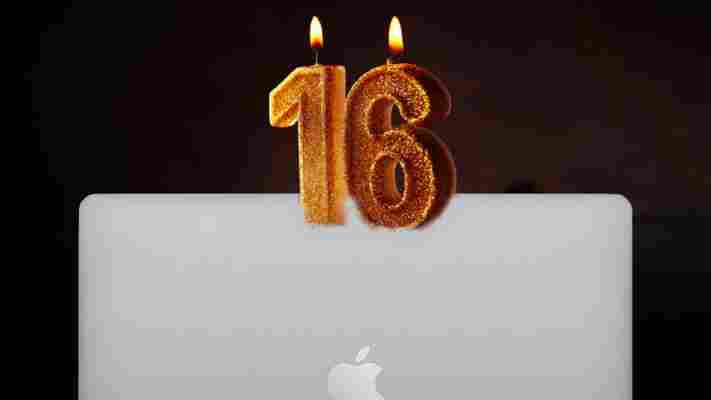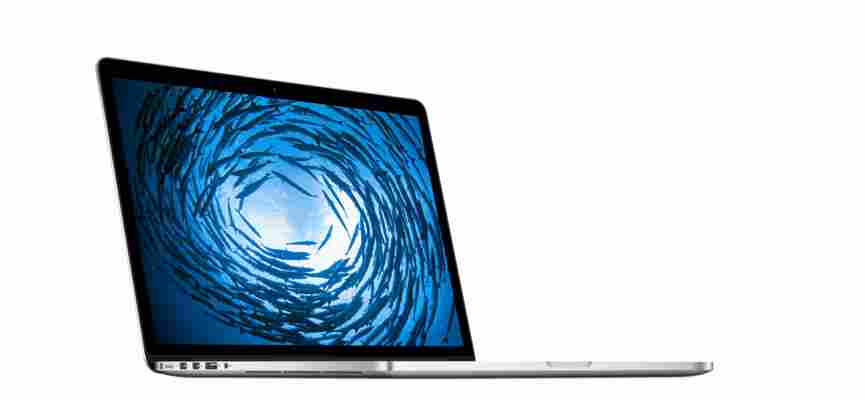It seems weird there was a time when the MacBook Pro didn’t exist. Apple’s most premium portable computer is an integral part of its lineup, something I associate with the company as much as the iPhone.

All things have to start somewhere though — and the MacBook Pro’s public life began on January 10, 2006.
It was at Macworld in San Francisco where Steve Jobs unveiled Apple’s new computer, which was the spiritual successor to the PowerBook G4 . The whole presentation is on YouTube , but you can watch it here:
Anyway, I’m not here today to deliver an exhaustive breakdown of the history of the MacBook Pro . Instead, I’m going to smash an allegory together in honor of the laptop’s storied history.
Dog years
We need to think about the age of tech differently. Even though the MacBook Pro is merely celebrating its sweet 16, it feels older. That’s why we need to equate the product with ageing beyond human standards.
You know, like dog years .
Rather than using the oft-quoted seven-to-one theory of our canine friends though, I propose that a MacBook Pro ages about twice as fast — meaning we’ll use a two-to-one ratio.
From its 2006 launch to about 2014 (ages zero to 16 in MacBook Pro years), we had a computer that was continually improving. There were some growing pains , sure, but nothing that couldn’t be handled.
Indeed, like many people in small towns, you could argue that the MacBook Pro peaked at 16 (eight human years) with its 20142015 Retina model .


Things couldn’t last like this though. Apple started messing with the formula a year or two after this peak. To put it another way, if the MacBook Pro was a person, 2016 was when they got bang into cocaine.
The fourth generation of the machine was when ideas that sounded innovative at 4am (ONLY USB-C! DONGLES ARE THE FUTURE! A FUCKING SCREEN ON YOUR KEYBOARD) were somehow ushered into reality.
In other words, this was the MacBook Pro’s version of Hollywood in the 80s.
The reason this was such a tragedy wasn’t because Apple tried something and failed. Instead, it was because it took the company about six fucking years to recognise it’d fucked up. The butterfly keyboard , the touch bar , and the lack of ports made using a MacBook Pro a trial — something a laptop should never be.
Flirty thirty
Nope, the MacBook Pro’s twenties (2016-2020) were not a good time. It got arrogant, and alienated friends and family. Then… something magnificent happened at the end of 2020: the M1 chip arrived .
I’m sure there were deeper, more structural changes in Apple’s decision making when it came to turning around the MacBook Pro , but that’s not going to stop me clumsily claiming that the launch of the chipset was akin to the laptop agreeing to enter rehab.
Two MacBook Pro years later (that’s one human year, remember), the range turned 30 — and Apple completely overhauled the machines .
To say the new 14- and 16-inch MacBook Pros are a return to form is an understatement.
People across the tech word went wild for the machines , which brought back the ports, improved heat dissipation, and were blisteringly fast. At long last, the MacBook Pro was clean from strange notions of what users want.
Okay, almost. The notch is unhinged in all the wrong ways , but years of substance abuse doesn’t disappear overnight. Some side effects will remain.
We’re here
It’s hard to explain how integral the MacBook Pro has been to my life. It’s where I learned Photoshop and podcasting. It’s where I got familiar with digital audio workstations (DAWs). I’ve spent thousands of hours writing on the machines. I’ve built and maintained gargantuan media libraries. We’ve done so much together.
I managed to hold onto my 2014 machine until this year, hoping that Apple would come to its senses and release a laptop that matched up to that model. And you know what? It did. I love the damn thing.
I just hope the MacBook Pro excels deep into its flirty thirties — I’m not sure I could handle it having a mid-life crisis after all of this.

